5 Best App Gamification Ideas To Boost Engagement (And Examples)
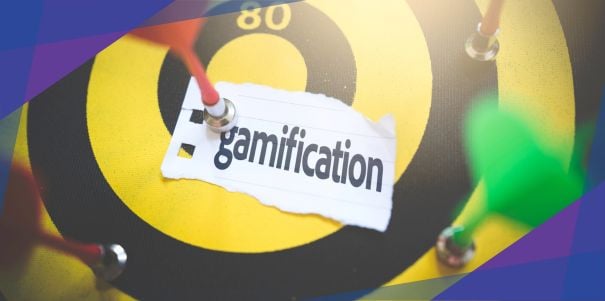
Imagine if you could make app users interested in your app and use it even just once a week. That’s already a surefire win. It’s because 90% of users who do this will likely stick around.
And one way to close the loop between engagement and success is through gamification. The science behind it proves that it’s an effective way to engage users with your mobile app and ensure they keep returning for more.
💡 If you haven’t yet thought of using it at some point, here’s a better reason you should: companies that have used gamification can increase the conversion rate up to seven times.
What’s more, by 2024, game-based learning and education apps are expected to earn over $24 million. So, if you’re in this niche, you can get a share of the pie as you develop and optimize your app.
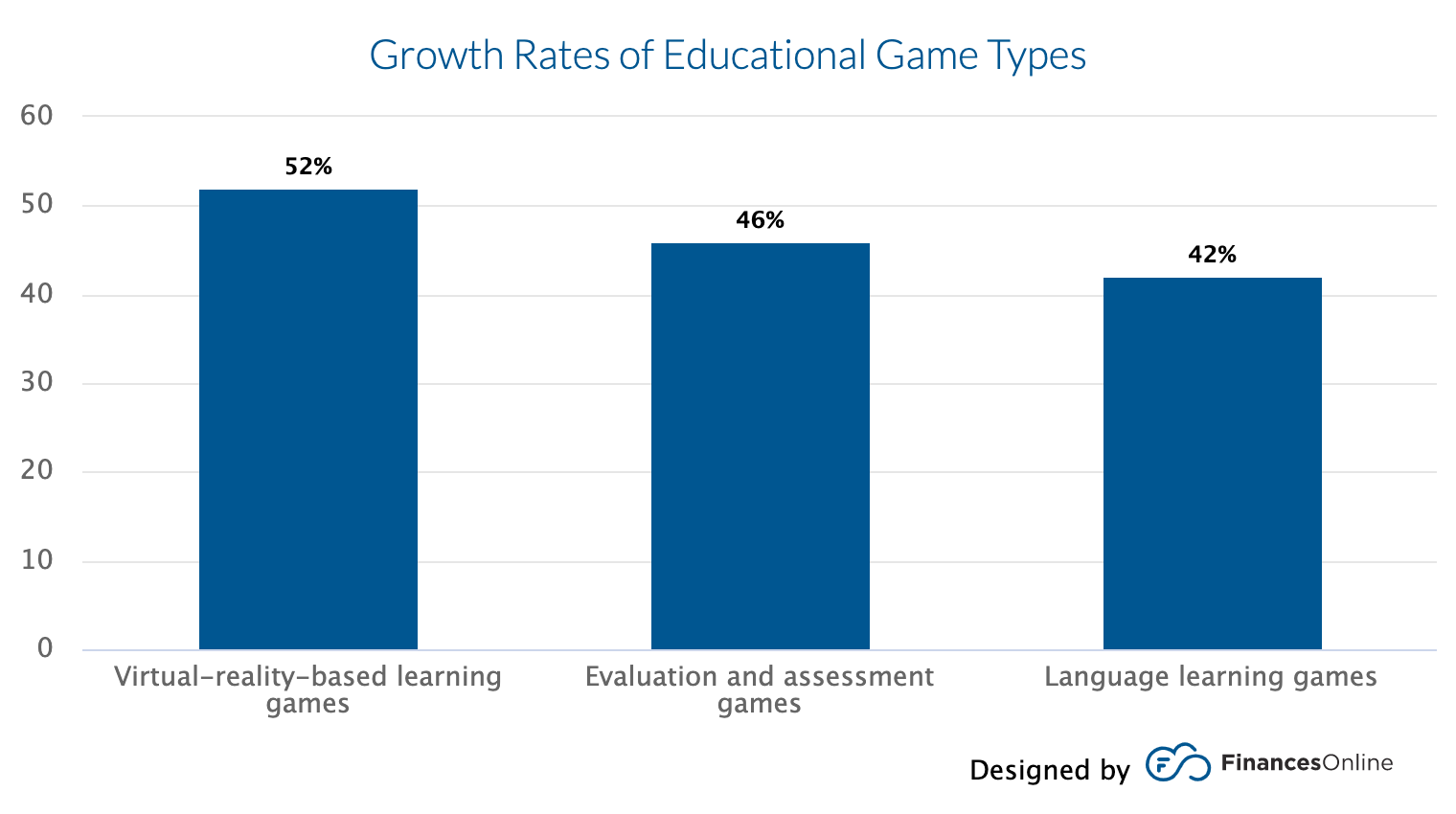
Source: Finances Online
So, beyond the science and statistics, our product strategy experts can attest to the efficacy of gamification for app engagement. They have helped numerous clients achieve success through app design and development.
From their experience, our experts suggest these top five app gamification ideas and provide real-world examples. More on this later.
But first, a quick intro to app gamification.
What Is App Gamification?
App gamification is the process of introducing game-like features into a non-gaming app. These features are designed to increase user engagement, motivate users to take specific actions and make the overall user experience more enjoyable.
The purpose of gamification is to encourage users to keep using your mobile app by making the experience more fun and interactive. This is achieved through various game mechanics such as rewards, points, badges, and levels.
Now conceptual explanations are all well and good. But there’s no better way to understand how app gamification works than learning from app companies and brands with compelling examples.
5 Ideas for App Gamification You Can Implement with Examples
1. Progress display
You may have encountered a progress display in popular games such as Candy Crush or Farmville – where you are given a sense of progress as you complete levels or tasks.
In the context of app gamification, it refers to visually displaying the user’s progress in the iOS app. This can be achieved through various means, such as progress bars, level-based progress, or even unlocking achievements.
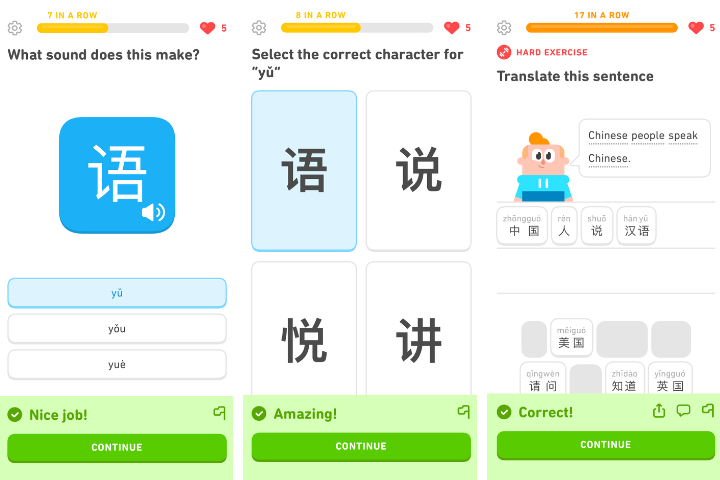
Source: Duolingo
Duolingo, the language-learning app, displays progress effortlessly using a color-coded bar atop the screen. Upon answering questions correctly, the bar moves right, offering users a sense of accomplishment and progress. Charming animated messages further motivate and cheer users on their achievements.
🔖 Our takeaway? Seeing a visual of their progress motivates users to keep using the app. It gives them a sense of accomplishment and positive reinforcement.
2. User rewards
User rewards are a crucial aspect of app gamification and have been known to drive user engagement and app retention.
In gamification, rewards are an incentive mechanism that encourages users to take specific actions in the app. These rewards can come in many forms, such as virtual items, points, badges, or real-world prizes.
So, how does it work? User rewards boost app engagement by creating a sense of progress and accomplishment. Unlocking rewards and making strides toward goals helps users stay active on the app, resulting in longer session times, frequent use, and stronger brand loyalty.
To better illustrate, let’s look at how user rewards play their role in the Claudia Dean app’s gamification strategy.
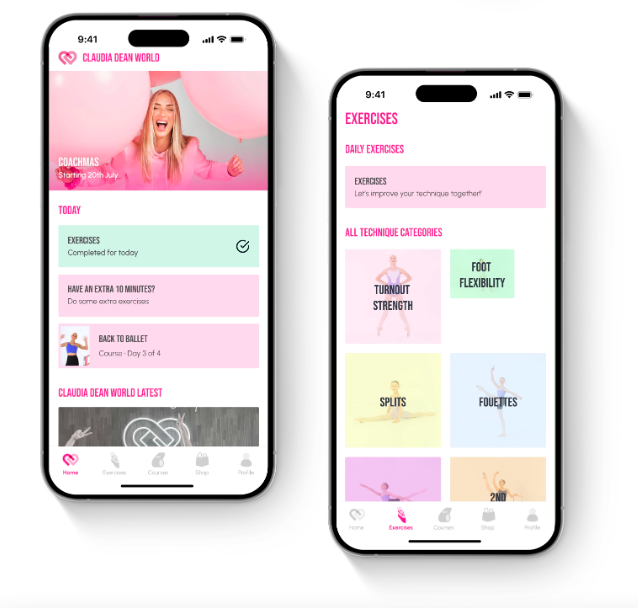
To give you a brief context, Claudia Dean, a former Royal Ballet dancer who trained at the Royal Ballet School, shared her vision with us and wanted a fitness app that reflects her dance expertise, and helps others master the craft.
Her ballet training app quickly gained traction, receiving 10,000 downloads in the first week, trending status, and a 4.9-star rating from over 200 reviews on the Apple App Store.
Whenever users practice in the app, they earn collection coins, which they can use to shop for merchandise within the app. They earn Collection Coins through:
💕 Create a free account on the online shop (200 Collection coins)
💕 Complete daily exercise for 20 minutes (20 Collection Coins)
💕 Complete daily exercise for 20 minutes (30 Collection Coins)
💕 Write a product review (100 Collection Coins)
💕 Celebrate a birthday (200 Collection Coins)
You can read Claudia Dean World’s case study for inspiration about her startup and mobile app success story.
It’s important to note that gamification isn’t just about creating a fun experience for your users. It’s also a way to collect valuable data on their behavior. In the case of Claudia Dean, the app was able to track the number of Collection Coins users earned, which gave the company insights into which features were most popular.
Get the latest industry news first.
🔖 Collection coin tracking in the Claudia Dean app shows the power of analytics tools for mobile applications. For more information on this, read our guide on the most powerful mobile app analytic tools.
🔖 We also like how Claudia’s brand designed meaningful rewards for users. The Collection Coins could be redeemed for dancewear and accessories, which is highly relevant to the app’s target audience.
3. Quizzes
Quizzes are a popular way to engage users and promote interactivity in mobile apps. When it comes to app gamification, quizzes are often used to incentivize users to stick around and participate in the app experience.
Simply put, app gamification quizzes present users with a series of questions or challenges that they must answer correctly to earn points, rewards, or other in-app benefits. These quizzes can take many forms, from trivia games to personality tests to mini-games.
Kids Academy, a leading kids learning app, uses gamified quizzes to enhance the learning experience. Quizzes test knowledge and keep users hooked and motivated to learn more. The app’s interactive quizzes reinforce the curriculum and engage young learners fun and meaningfully.
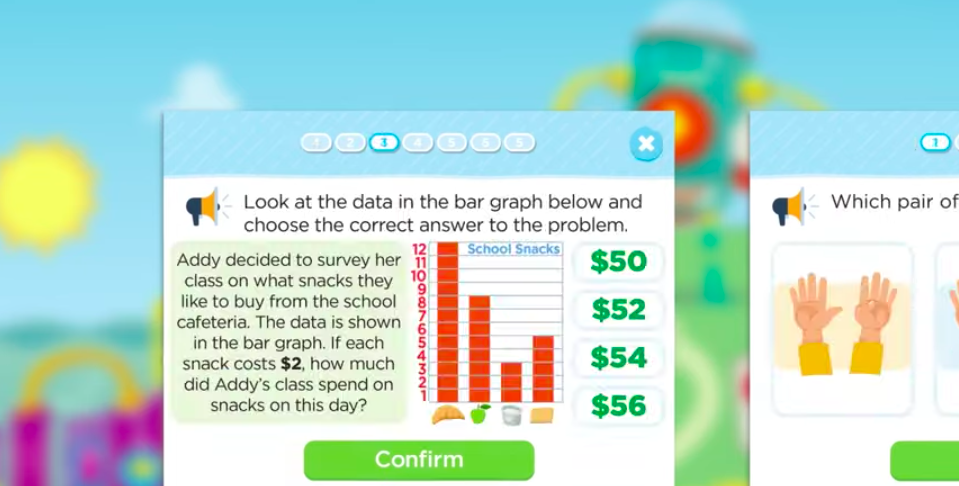
Source: Kids Academy
🔖 What we learn from Kids Academy is that gamifying an app requires a careful balance of fun, education, and incentives to keep users engaged. You need to be creative and, at the same time, strategic on user experience as well, especially if the target audience has a short attention span, typical of many children.
4. Leaderboards
Now that we’ve covered quizzes, let’s discuss another popular gamification tool – leaderboards.
A leaderboard is a visual representation of the top performers in a game or app. It shows the current rankings of all the players and their scores. Some form of reward usually accompanies this, whether virtual goods, real-world prizes, or just bragging rights.
A leaderboard ranks users’ scores, which update daily based on accumulated results. Seeing their name climb the leaderboard motivates players to strive for better scores.
An example of a leaderboard in action is in the popular fitness app, Nike+ Run Club. Users can compete against each other to see who can run the most miles in a week or month.

Source: Nike
They can also create groups with friends and compete in group challenges to see who can run the longest distance in a set time frame. All this data is then displayed on a leaderboard, which helps users track their progress and see how they stack up against others.
🔖 The Nike+ Run Club app’s power lies in the competition and sense of accomplishment of climbing up the leaderboard. It motivates and engages users by placing them in a competitive situation. Additionally, it helps people track their progress through feedback and see the fruits of their hard work.
5. Badges
Badges have been a part of our lives since our childhood, and now, they have evolved to become one of the most effective tools for app gamification.
Badges are virtual rewards that users earn by completing specific actions or achieving particular milestones within an app. Icons or images typically represent these badges. Users can collect and display them on their profiles or share them with friends on social media.
Badges benefit app developers by instilling a sense of accomplishment, recognition, and user engagement. Additionally, badges foster friendly competition, as users strive to earn more and compare collections with friends.
An excellent example is Fitbit, a fitness tracking app, where users can earn badges for reaching step goals or completing challenges. Each badge has a witty name like “High Tops” when you reach 20,000 steps in a day. There’s also the “Minions: Stuart” badge that the user earns when it reaches 12,345 steps in a day.
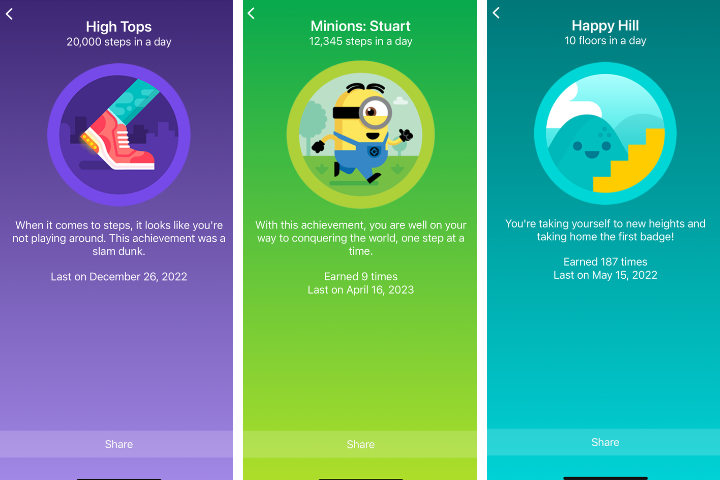
Source: Fitbit
🔖 Fitbit’s badges have succeeded because they offer small, achievable goals to users. The badges are diverse and range in difficulty, catering to the unique fitness goals of each individual. With an inclusive and accessible system, Fitbit has attracted a gamut of people who find value in their app.
Start With an MVP Gamified App, Scale Later
App gamification is a great way to help your customers engage with your app or product. There are plenty of ideas, including leaderboards, level-ups, and rewards systems.
As such, implementing app gamification can be highly beneficial both for your business success and customer satisfaction. The easy-to-implement ideas mentioned in this post should give you a good starting point.
And while optimizing for user growth is essential, don’t forget that you must start somewhere: consider starting with an MVP (Minimum Viable Product) or application and then expand accordingly.
A minimum viable product (MVP) app is a product that contains just enough features to solve a specific problem and meet the needs of early adopters. It’s designed to provide a basic set of functionalities that can be tested and validated before investing more resources into further development.
The MVP approach is highly effective because it allows you to test the potential of your idea in a cost-effective and efficient way. It also enhances your speed to market, enabling you to generate income from your app faster. Also, many companies that started with MVPs are now household names.
At Appetiser, we help you avoid the costly mistake of investing significant amounts of time and resources in a product that may not meet the needs of your target audience. Instead, we can refine and develop your app based on real-world feedback and insights.
We provide comprehensive app development services that will ensure the success of your mobile project – from inception to execution.
Contact us to take advantage of our free consultation and industry-leading app business insights.

Maria Krisette Lim is a Content Marketing Specialist with 14 years of experience producing web and print ad content. Krisette has a BSBA degree, major in Business Management and Entrepreneurship. When she’s not tinkering with words and punctuation, she’s either curled up with a book while sipping hot tea, playing with her toddler, or tinkering with website builders.
Get the latest industry news first.


